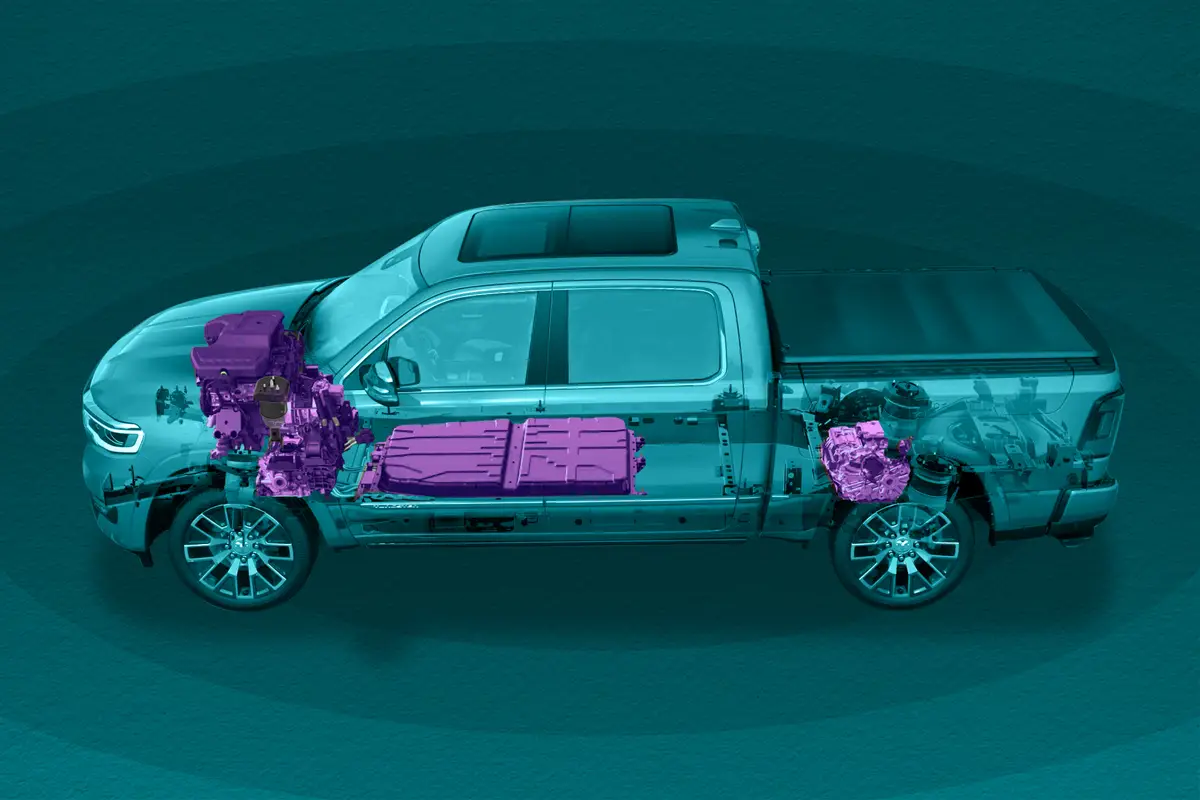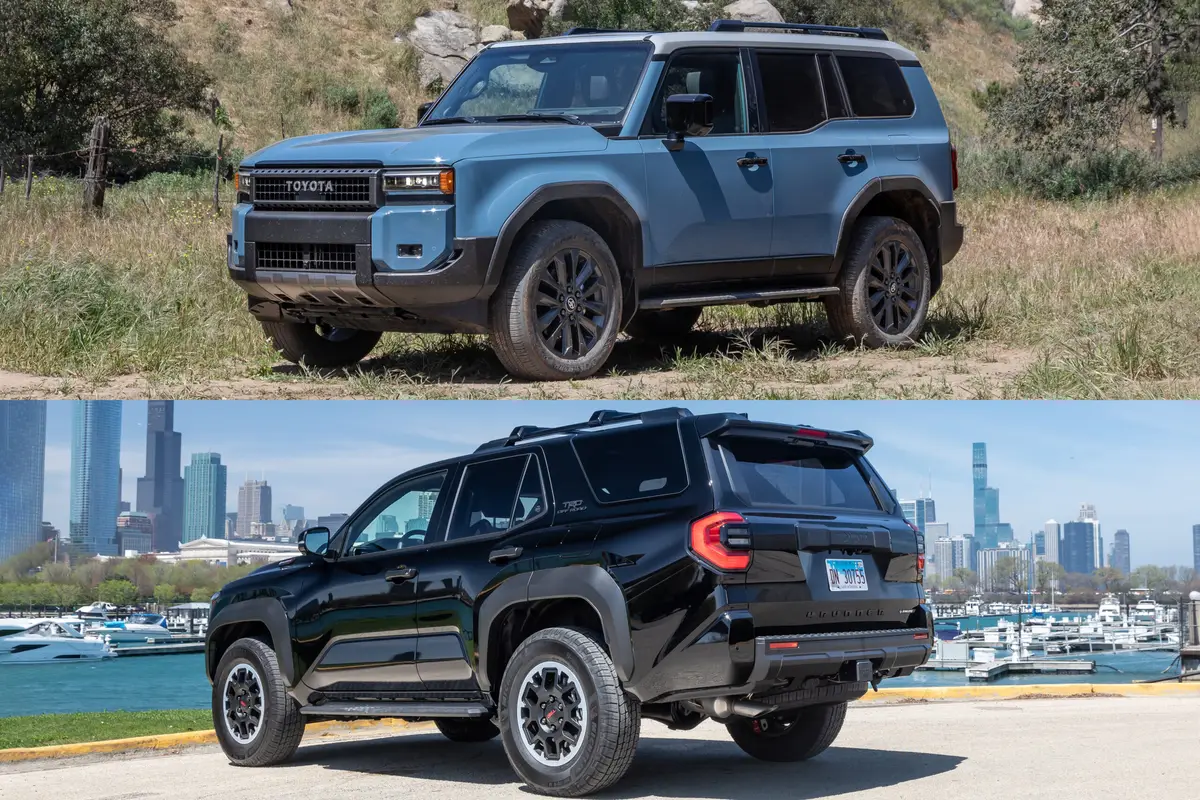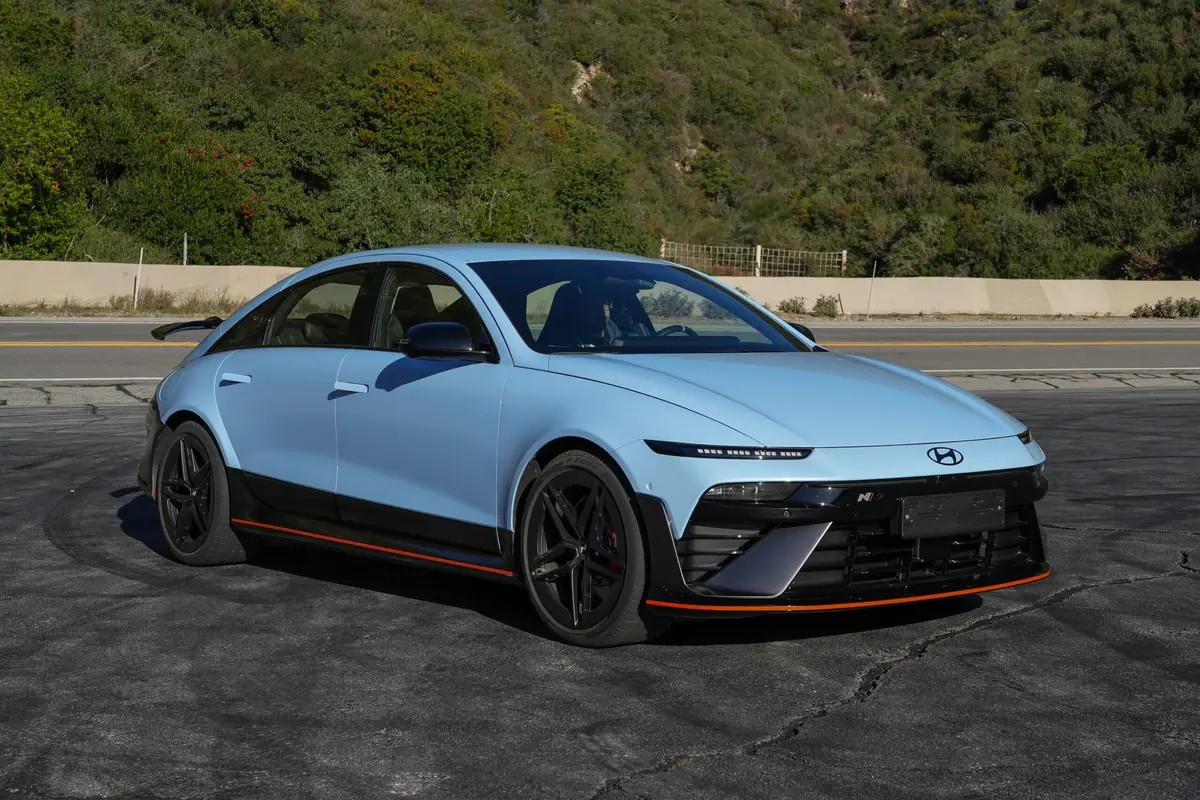What Is a Range-Extended EV, and How Does It Work?

Key Points
- A range-extended electric vehicle pairs an electric motor with a gasoline engine/generator, which recharges the battery as you drive.
- An REEV powertrain differs from other hybrid setups because the engine doesn’t power the wheels.
- REEVs may become more common in the future, but past examples include the BMW i3 and Chevrolet Volt.
A range-extended electric vehicle, which is perhaps more commonly known as an extended-range EV or EREV, is an electric vehicle that includes an onboard generator that is powered by a gasoline engine and can recharge the battery as you drive.
Related: How Do Hybrid Cars Work?
This arrangement differs from a plug-in hybrid or regular hybrid in that the gas engine typically doesn’t power the wheels; it only spins the generator as the electric motors send torque to the pavement. The engine and generator usually kick on automatically when the battery charge gets low, and when the engine runs low on fuel, you can simply stop at a gas station, fill up the tank and keep driving.
While this might seem like a great way to alleviate most of the range anxiety associated with a regular EV, there so far haven’t been many REEVs offered in the U.S. That may change, however, as some companies have recently announced plans to introduce them in the near future, including Jeep and Ram.
Read More About Electrified Powertrains on Cars.com:
- What’s the Difference Between a Hybrid and a Plug-In Hybrid?
- Do Hybrid Cars Need to Be Plugged In?
- What Is a Mild-Hybrid Vehicle?
- How Long Do Hybrid Batteries Last?
- Should I Buy an Electric Car or Plug-in Hybrid?
Past Range-Extended EVs
- Key takeaway: The BMW i3 offered a range-extended EV powertrain. The Chevrolet Volt had a similar setup, though because its engine/generator could also power the wheels, it was considered more of a plug-in hybrid.
Perhaps the best example of an REEV that has been sold in the U.S. is the BMW i3, a distinctive-looking subcompact car offered between the 2014 and 2021 model years. Although the base i3 was a traditional EV, a range-extender package (called “REX”) that consisted of a small two-cylinder gas engine, generator and a roughly 2-gallon fuel tank was optional.
Early versions with the range extender could travel an EPA-estimated 72 miles on just electric power, after which the gas engine/generator kicked on and extended the range to about 150 miles — at which point you could refill the fuel tank and travel another 78 miles or so before having to fill the tank again. As such, the range-extender setup helped alleviate range anxiety, but it was hardly practical for long-distance driving. However, by the end of its U.S. sales span, the i3 with range extender was improved to the point that it could go 126 miles on electric power and 200 miles before having to refill the tank. Still, BMW never sold many i3s in the U.S.
Sometimes considered a REEV was the model-year 2011-19 Chevrolet Volt. While far more popular, the Volt didn’t work on the same principle, as its four-cylinder engine could join the electric motors in driving the wheels under certain circumstances — even more so in the second generation that arrived for 2016.
The Volt also had far less electric range than the i3 but far more gas range. Early versions could go an EPA-estimated 35 miles on electric power only, plus another 345 on gas, for 380 miles total. Later models could travel 53 miles on electric and another 367 on gas, for 420 miles total. Thus, due to its configuration and greater focus on gas power, the Volt was really more of a plug-in hybrid than an REEV.
Whether referred to as a range-extended EV or extended-range EV, the introduction of better batteries has made REEVs more attractive, as they can go farther on electric power alone before having to kick on the gas range extender. This preserves many of the benefits of all-electric driving while still serving to reduce range anxiety, along with making long-distance driving more practical.
Related Video:
Cars.com’s Editorial department is your source for automotive news and reviews. In line with Cars.com’s long-standing ethics policy, editors and reviewers don’t accept gifts or free trips from automakers. The Editorial department is independent of Cars.com’s advertising, sales and sponsored content departments.
Featured stories



